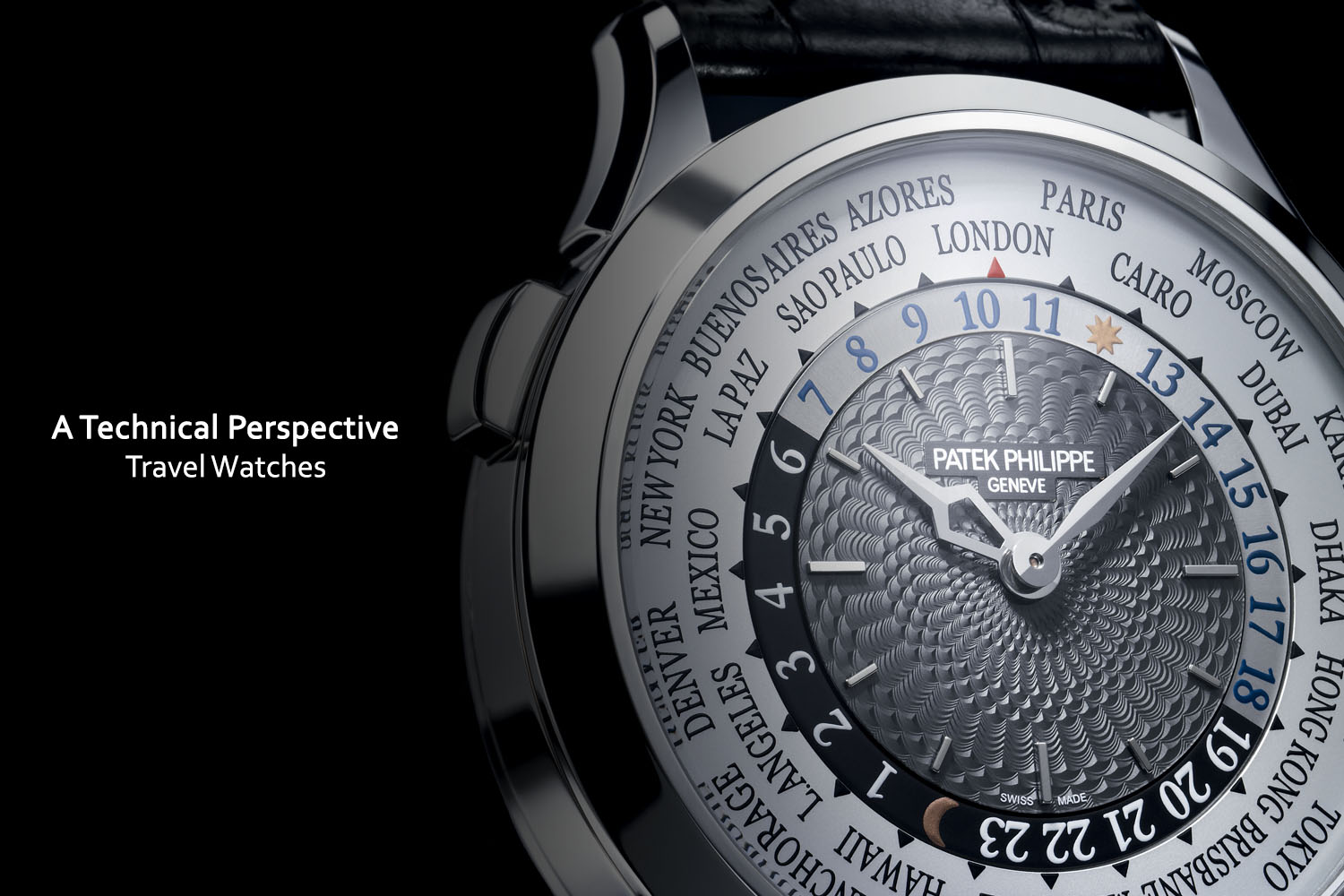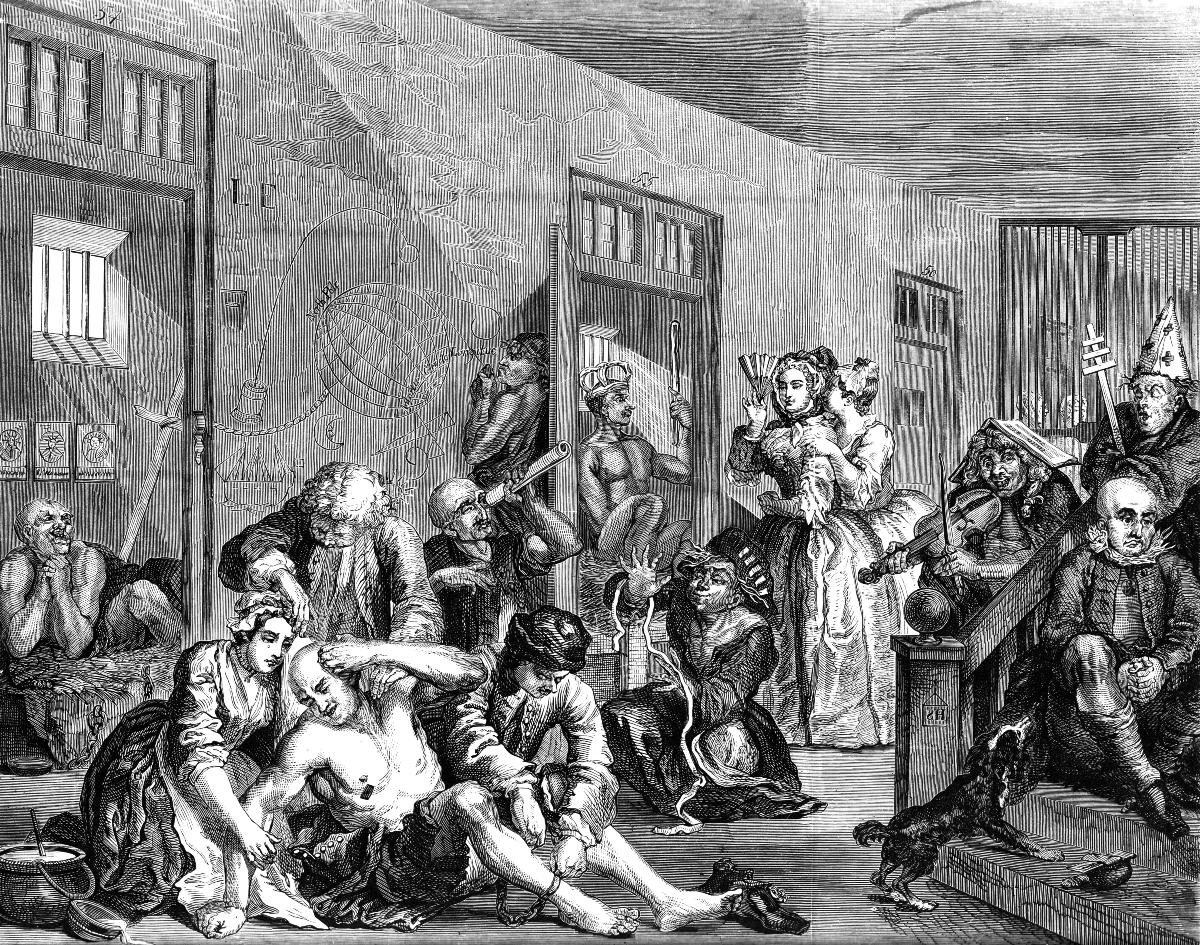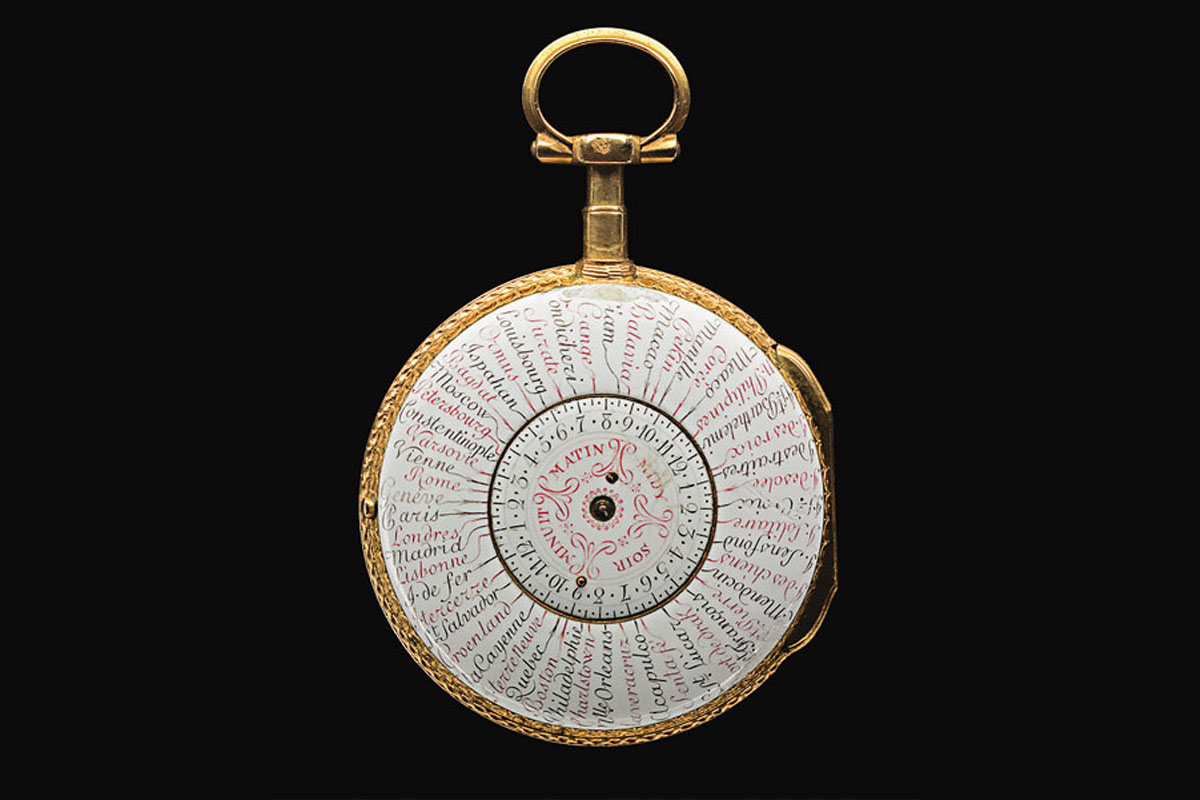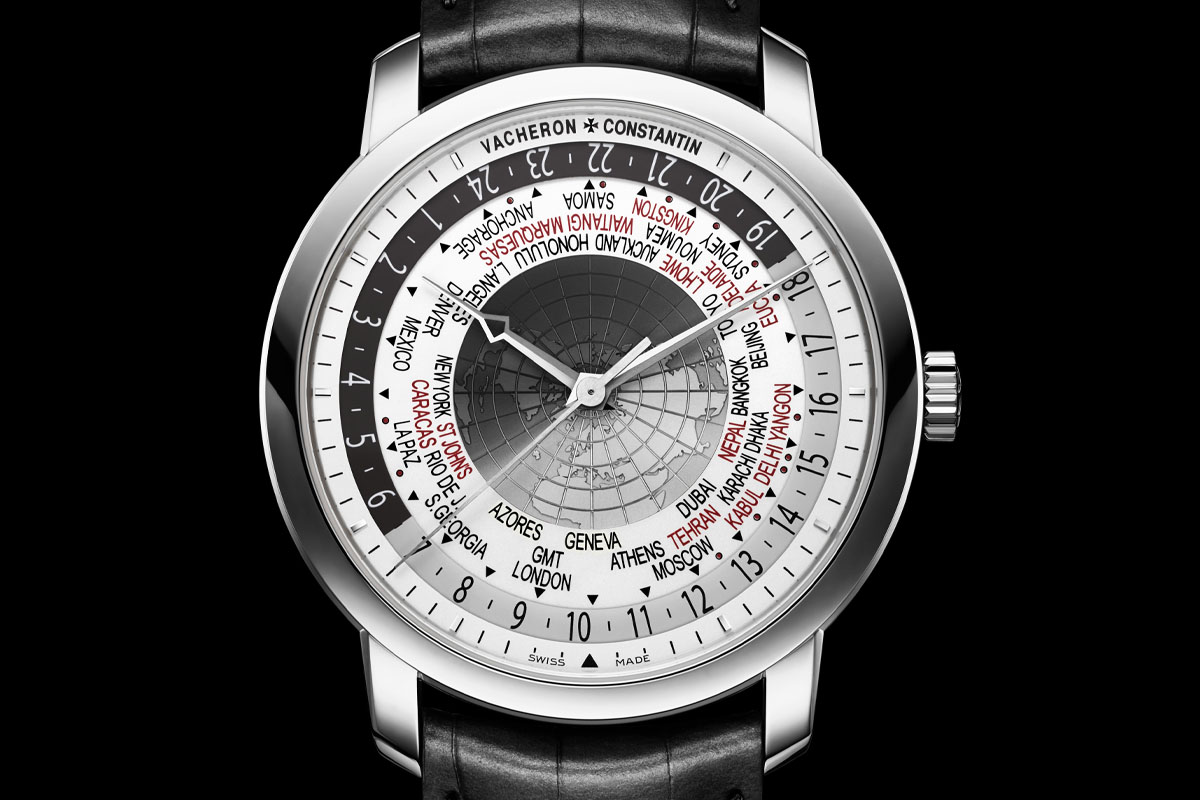A Technical Perspective – Travel Watches (World Timer – GMT – Multiple Time Zones)

The vast majority of people are comfortable with watches simply displaying hours and minutes but for globetrotters, frequent travellers and those doing business around the world, multiple time-zone watches are highly practical and purposeful for their daily travelling needs. Here is an in-depth look at an important category, the Travel Watches.
Back in 1732-1733, William Hogarth depicted the rise and fall of fictional character Thomas Rakewell through 8 paintings leading him from riches to Bedlam, London’s notorious mental hospital, the last painting of the series features lunatics trying to solve the longitude problem with a telescope or scratching on the walls. At the time, determining longitude was one of the major scientific endeavours, to the point of which drove some people insane.
William Hogarth, A Rake’s Progress, Plate 8
Some of the greatest minds of their time were involved in finding a method to determine the longitude of vessels at sea to provide safe navigation passages. A practical solution came from John Harrison a carpenter and self-educated clockmaker, who spent decades perfecting accurate clocks. To know longitude at sea, you need to know precisely the time aboard ship and at your home port, to aid in converting the hour difference’s into geographical separation.
Time equals longitude as the earth rotates at a steady rate of 15° per hour. Still today, travellers are confronted with the most pragmatic aspects of time to know the local time at their destination or keep track of what is happening in different time zones around the world. This is easy to accurately pinpoint today, but this luxury did not always exist.
Before the invention of a unified time systems the sun dictating each city had its own local time, the sun dictating the law of time.
Even neighbouring cities needed to set their clock differently. For instance, there was over a 100 local times in the United States alone. To keep track of time, travellers had two options: carry several watches or carry watches displaying various local times. Double-time pocket watches could keep track of local and railway time simultaneously. In a similar vein, and back again to nautical navigation, the so-called ‘captain watches’ featured two small dials displaying both local and home port time.
Double-sided pocket watch with 53 local times – signed Rouzier and Melly – Circa 1780 – Credit – Musee horlogerie Beyer
The industrial revolution (in the late 19th century) opened the way for extensive travel. The development of railway networks prompted the introduction of standard time arrangements; for instance, in 1840, a railway time synchronized different local times in England.
Silver Captain Pocket Watch – Jean-Francois Bautte – Circa 1820 – Musée Girard-Perregaux
At international level, a simple and useful concept was sketched out and progressively adopted by all countries, thanks to the efforts and ideas of Scottish-born Canadian engineer Sandford Fleming. The prime Meridian conference held in Washington D.C. in 1884 gathered representatives and delegates from over 20 nations to determine a meridian that could be adopted as the common zero of longitude and for the delegates to agree on a standardized time system. The globe was subsequently divided in 24 time zones of one hour that we know today, each with a width of 15° longitude (even if we know that there is now 37 time-zones around the world, some being calculated on half or quarter of an hour). Much to the dismay of the French, the reference meridian would be Greenwich, England.
World Timer Watches
Louis Cottier, The son of a watchmaker, earned horological fame for developing mechanisms indicating the global conception of time adopted at the Meridian Conference placed on a single dial. From the 1930s onward, Cottier manufactured such watches for prestigious clients: Baszanger, Vacheron Constantin, Patek Philippe, Rolex or Agassiz, to name a few.
The rare and iconic Patek Philippe ref. 2523, launched in 1953. The ingenious second crown system to rotate the city ring was developed by Louis Cottier in the late 1940s and used for Patek Philippe
Cottier’s specificity was to design watches featuring the local time with hour and minute hands at the centre coupled with a rotating 24 hour ring encircled by the name of different cities or places. The city of reference was placed at 12 o’clock and the centre part of the dial referred to the local time. The system designed by Cottier is still used today as the base for most worldtimers, while the fixed city indication was later made adjustable by the use of a second crown, a pusher or simply a rotating bezel the main base stayed the same.
The newly introduced Patek Philippe ref. 5230, replacing the Patek Philippe ref. 5130, itself replacing the ref. 5110 that was launched in 2000 and marked a revival for worldtimers
Recently, considering the 37 time-zones composing our actual world-map, some brands tried to improve the concept of words timers by implementing all of these possible times. The first to come with such a complication was Vacheron Constantin – with the Patrimony World Time – which displayed the 37 time-zones on a dial similar to a classical World Time watch (a city ring and a 24-hour ring), then followed by Glashutte Original with the Grande Cosmopolite Tourbillon and the Senator Cosmopolite (which use windows to emphasize the desired time-zone and that also include the Daylight Saving Time concept).
The 37 time-zones displayed by the Vacheron Constantin World Time
GMT / UTC / Dual time watches
Offering easier legibility, many modern traveller watches simply show the indication for 2 different time zones. Traditionally, these are used to display local and home time, the date change following local time. Airplane Pilots predominantly use these to show Greenwich Mean Time and local time, which explains the name GMT watches.
A modern version of the iconic Rolex GMT Master which was first released in the mid-1950s. It was designed together with Pan American Airways, to equip their crews. The GMT or another time zone is shown using an additional hour hand rotating in 24 hours and is read on the two-tone bezel showing day and night.
With a only a few rare exceptions (the extra 13 time-zones not calculated on full hours), the minutes will remain the same in all places around the globe. Resetting mechanisms allow modifying only the hours for the second time zone, usually with pushers if not through the crown. Many variations exist but the distant time zone is often showed by the use of 24 hours to tell if it is day or night.
GMT was adopted during the 1884 Washington international conference when Greenwich was adopted as the prime meridian, to determine time zones and original time or GMT (Greenwich Mean Time). It was replaced by UTC (Coordinated Universal Time) in 1967 which then became the international basis of time. For most purposes, it is equivalent to GMT and the terms are often used interchangeably.











5 responses
top rate. more in the future please.
Nice article.
Great article, very educational especially from an historical perspective.
Thanks ! (and please, more!)
Regards,
slide68
Fiesta sorry to be unsatisfied but as you may know Most of the watches on the market are unable to satisfy a globtrotter. Why? Because none of them takes into account winter time vs. summer time and this is especially requested when you want to correctly know what time is it in Brazil when you live in France. In fact mirror less the north hemisphere is in Summer when the south one will shift to Winter. This is why a simple mechanics can’t achieve the target to display the correct time all around the world. The best you can have is a correct time if you want to know the time in the same hemisphere. That’s all such “travel watches” can offered.
Everyone has to know that before any purchase.
Regards.
JMR
Thank you all for your comments.
Andrea, nice to see you here!
JMR, indeed, only some parts of the world participate to daylight saving times. Mechanical worldtimers do not take into account DST and are innacurate for part of the world during summer (offset =1 hour). To make things more complex, DST are a ‘volatile’ variable. Some systems are proposed to help cope with DST. For instance, the IWC pilot watch worldtimer, Breitling or Vogard worldtimers have indicators to ease the reading of time for ‘DST’ cities. Still, as you mention it, some cities in the same time zone, may or may not follow DST…
And yet, to me, mechanical worldtimers retain a unique charm.
Xavier.